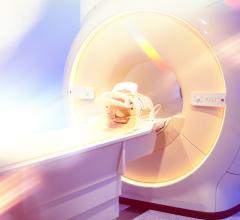
Getty Images
January 31, 2022 — The global medical radiation detection market was valued at $1,173.0 million in 2020 and is projected to reach $2,558.1 million by 2030, registering a CAGR of 8.4% from 2021 to 2030, according to the new report, "Medical Radiation Detection Market by Detection Type, Product, and End User: Global Opportunity Analysis and Industry Forecast, 2021-2030" from ResearchAndMarkets.com.
Medical radiation detectors are a type of medical equipment that is used to detect the presence of radiation. When an individual is exposed to radiation for an extended period of time, it is more likely to induce a variety of fatal illnesses. This increases the demand for equipment that can detect the quantity of radiation accumulation in the body. Handheld Survey Meter (HSM), personal radiation detector (PRD), Radiation Portal Monitor (RPM), and Radiation Isotope Identification Device are some of the major detectors available for identifying radioactive materials and ionizing radiation (RIID). With technological advancements, various radiation detecting gadgets may become accessible for use at home. Dosimeters are medical radiation detecting equipment that can detect the presence of Gamma rays, the most dangerous external radioactive threat.
The rising occurrence of cancer necessitates the use of medical radiation detectors, which drives the market expansion. Furthermore, an increase in the use of nuclear medicine and radiation therapy for the diagnosis and treatment of acute radiation illness will contribute to market growth in the future. Furthermore, there has been a significant increase in the number of diagnostic imaging facilities that require medical radiation detectors to avoid excessive radiation exposure, fueling the market development throughout the projection period.
Rising awareness regarding safety from prolonged exposure to radiation especially in radiation-prone settings as well as an increase in the number of individuals having medical insurance would propel the growth of the medical radiation market during the forecast period. However, the increased cost of medical radiation detection will stifle the market expansion. Furthermore, the increased potential for medical radiation detection in emerging markets is expected to assist the industry produce more possibilities in the coming years.
The global medical radiation detection market is segmented on the basis of detection type, product, end user, and region. On the basis of detection type, the market is categorized into gas-filled detectors, scintillators, and solid-state. By product, it is classified into personal dosimeters, area process dosimeters, surface contamination monitors, and others. By end user, it is divided into hospitals, ambulatory surgical centers, clinics, and others. Region-wise, the market is analyzed across North America, Europe, Asia-Pacific, and LAMEA.
Based on detection type, the market is categorized into gas-filled detectors, scintillators, and solid-state. In addition, the gas-filled detectors segment is expected to gain the highest revenue during the forecast period. This is attributed to spike in demand for gas-filled detectors to aid in the control of severe radiation exposure. In addition, the improvement in usage of nuclear medicines would propel the market growth in the coming years.
Based on product, the personal dosimeters segment is anticipated to gain the fastest CAGR during the forecast period, owing to the benefits of personal dosimeters, including an alert system for radiation exposure throughout the day and the availability of indications that aid in detecting increased sensitivity to hazardous radiation. However, area process dosimeters are expected to gain a significant share during the forecast period. This is attributed to the rising need for such dosimeters for detecting hazardous radiation in the commenced period.
Based on end user, the market is divided into hospitals, ambulatory surgical centers, clinics, and others. The hospitals segment is anticipated to gain the fastest CAGR during the forecast period, owing to a surge in the number of outpatients and inpatients in hospitals as well as an increase in patient population during the forecast period. In addition, the clinics segment is expected to gain significant share, owing to the ease in accessibility of clinics in remote areas, thereby propelling the market growth.
For more information: www.researchandmarkets.com
Related Radiation Therapy Content:
7 Trends in Radiation Therapy at ASTRO 2021
Radiation Oncology Research Featured at ASTRO 2021
Photo Gallery of Technologies at ASTRO 2021
VIDEO: Sedating Children With Movies Rather Than Drugs for Radiation Therapy — Interview with Jeffrey T. Chapman
VIDEO: 4 Radiation Oncology Technologies to Watch — Interview with Anthony Zietman, M.D.
VIDEO: Advances in Radiopharmaceutical Therapy — Interview with Ana Kiess, M.D., Ph.D.
VIDEO: MRI-Linac and PSMA PET Imaging Technologies Aids Therapy at GenesisCare — Interview with Walter Curran, Jr. M.D.,
VIDEO: Elekta Harmony Radiotherapy System Walk-around
VIDEO Example of the Varian Noona Bidirection Oncology Patient Interface Software
VIDEO: Examples of Cherenkov Radiation Imaging During Radiation Therapy
Find more radiation oncology technology news


 April 25, 2024
April 25, 2024 








